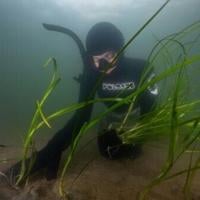Researchers have identified the oldest seagrass in the world, which is located in Finland and is estimated to be 1,403 years old. A new method was used to determine the age of aquatic plants by examining genetic mutations over time, providing groundbreaking accuracy in dating the original ancestor plant.
The study, which was published in the journal Nature Ecology and Evolution in June, used a “genetic clock” technique at various sites globally. It revealed that a vast underwater meadow of eelgrass in the Finnish Baltic Sea is the oldest marine plant known to date. This method offers insights into the age of plants and how ecosystems function, potentially shedding light on human ageing processes.
Eelgrass populations reproduce through flowers, seeds, and rhizomes, providing crucial marine habitats for other organisms and storing carbon dioxide. Despite its remarkable age and ecological importance, eelgrass faces threats in the Baltic Sea due to nutrient pollution and climate change, leading to significant population declines in recent years.
While the ancient seagrass demonstrates resilience, conservation efforts are crucial to protect this valuable ecosystem in the Baltic Sea, bordered by multiple countries including Finland, Germany, Poland, Russia, and Sweden.





